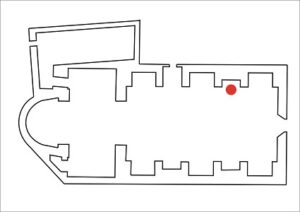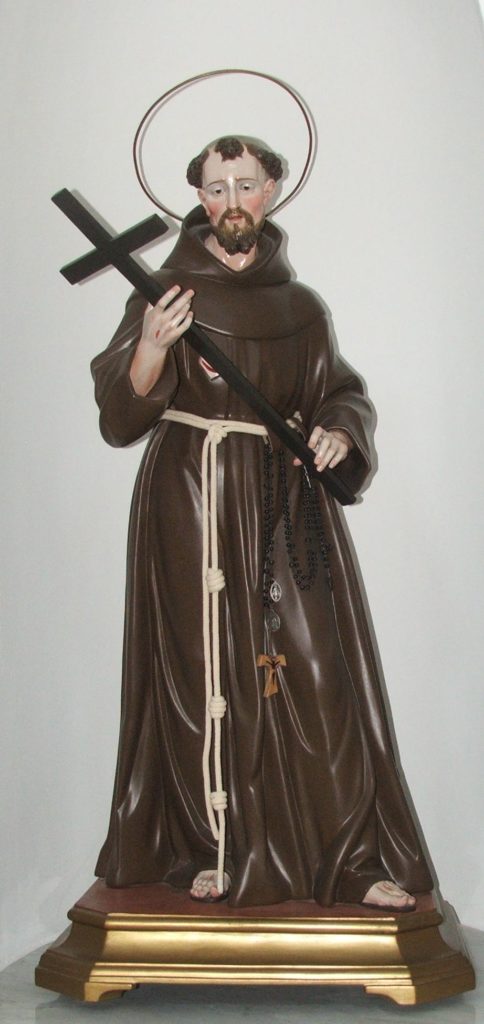San Francesco d’Assisi


Chiesa di S. Maria Maggiore
Scultura
San Francesco d’Assisi
Sec. XVIII (prima metà)
legno scolpito e dipinto
Ambito culturale napoletano
Le prime notizie di un altare dedicato a San Francesco d’Assisi nella Chiesa Madre di Grottaminarda risalgono al XVII secolo, ma è noto che già la famiglia d’Aquino era legata all’ordine francescano. Infatti si ha notizia che Luca d’Aquino, signore di Grottaminarda dal 1289 al 1299, fu munifico benefattore dei frati minori di Benevento e alla sua morte fu seppellito nella Chiesa di San Francesco dei frati minori della città sannita.
L’opera, realizzata in più pezzi di legno assemblati con perni e colla animale, rappresenta San Francesco nell’atto di contemplare il crocifisso tenuto tra le mani. Il viso e le mani del santo, fortemente connotati nell’anatomia, rimandano alla cultura artistica napoletana di primo Settecento.
La scultura è stata restaurata da Luigi Di Bella nel 2015.

Church of S. Maria Maggiore
Sculpture
Saint Francis of Assisi
18th century (first half)
carved and painted wood
Neapolitan cultural sphere
The first news of an altar dedicated to St. Francis of Assisi in the Mother Church of Grottaminarda date back to the 17th century, but it is known that the Aquino family was already linked to the Franciscan order. In fact, it is known that Luca d’Aquino, lord of Grottaminarda from 1289 to 1299, was a munificent benefactor of the Minor Friars of Benevento and was buried in the Church of San Francesco of the Minor Friars in the Samnite city.
The work, made of several pieces of wood assembled with pins and animal glue, represents Saint Francis in the act of contemplating the crucifix held in his hands. The face and hands of the saint, strongly characterized in anatomy, refer to the Neapolitan artistic culture of the early eighteenth century.
The sculpture was restored by Luigi Di Bella in 2015.

